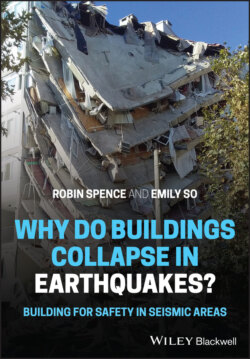Читать книгу Why do buildings collapse in earthquakes? Building for safety in seismic areas - Robin Spence - Страница 13
1.4 Aims of This Book
ОглавлениеThe title of this book asks a question: Why do buildings collapse in earthquakes? In exploring the many layers of the answer to this question, and the many answers in differing contexts across the world, we want to demonstrate that this is not just, not even primarily, a technical question, but also a social, organisational and even political question. In this book, we look at buildings not only as assemblages of materials and components put together to achieve certain functional ends, but also as products of a society and a culture. We aim to explain the physical reasons why buildings fail to withstand earthquakes, but also to attempt to understand the social, economic and political reasons why earthquake disasters continue to happen. And through this combined understanding, we want to point to the actions that can be taken to improve seismic safety, and identify who should be taking them.
With this aim, we hope to reach a wider audience than those interested in the purely technical aspects of earthquake protection, who would prefer a non‐mathematical approach to the subject, with limited technical detail. Thus, the book is designed to be read by all those interested in the consequences of earthquakes, or concerned for their own safety as occupants of buildings in earthquake areas. It is also intended for those who have responsibility for ensuring the safety of others in earthquakes, whether as government officials, political representatives, building owners or managers of businesses. The book is written for a non‐technical readership, but will also be of interest to all those professionally involved in disaster preparedness and earthquake engineering, as well as to students and practitioners of architecture and engineering seeking a broad overview of the consequences of earthquakes for buildings.
Some readers of the book will live in an earthquake zone, in which case they will want to know if their homes or workplaces are vulnerable, and what they can do to protect themselves from an earthquake, in advance or when it happens. Other readers may own or manage buildings in earthquake zones, or be responsible for the safety of those who occupy them; they will want to know what steps they as owners might be able to take to provide adequate safety. Other readers may be responsible, as architects and engineers, for the design of new buildings or the refurbishment of older ones in earthquake zones and will want to know what the essential steps in building for safety in such areas are. Yet, others may have a more general interest in natural disasters and need an informed but largely non‐technical account of how buildings have performed and of how the way today's buildings are constructed has been influenced by past earthquakes. The book aims to provide useful and accessible answers for all of these groups of readers.
